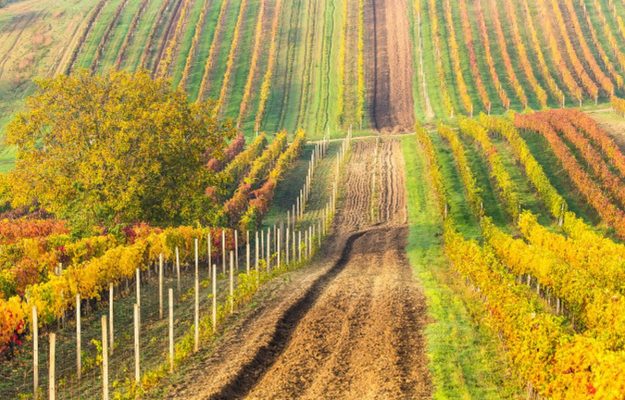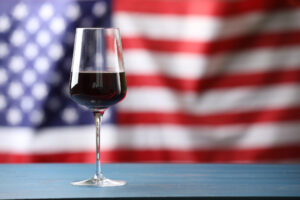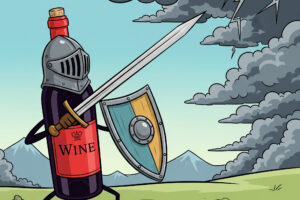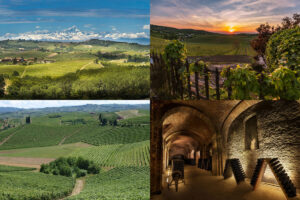“If tourism is the main economic victim of the COVID epidemic, with 1.4 billion travelers a year and global business of around 1.3 billion blocked by the fear that empty planes, hotels, restaurants and travel agencies, for wine tourism the situation is serious: for the cellars alone it is possible that the 25. 000 Italian wineries open to the public, including 5-8,000 well-organized hospitality companies, employ around 30,000 seasonal employees in wine tourism, as well as permanent staff and members of wineries, all of whom could become unemployed. Considering the economic repercussion of the lack of direct sales, the figures are just as discouraging: 2-2.5 billion Euros, which constitute important liquidity for Italian companies, but above all a source of income with a much higher marginality than normal commercial channels”. This is said by Donatella Cinelli Colombini, producer, promoter of wine tourism in Italy and of the “Cantine Aperte”, teacher of wine tourism in university masters, for which, with the loss of customers, business and jobs, Italian wineries will hardly be able to start again after Phase 1.
“In this disastrous 2020 every country will try to keep its citizens within its national borders and probably also Italians - she points out - for this reason, the tourist destinations where travelers are predominantly Italian will be less affected than regions, such as Tuscany, where arrivals from abroad have very high percentages and among them, the Americans are numerous (9% of total arrivals). Here a real meltdown is emerging. Let's not forget that foreign tourism is worth over 40 billion for Italy”. The situation in the countryside, where tourism has exploded in recent years in the form of agritourism and food and wine tourism, is serious: in these areas, for example, restaurants do not have, or have very few local customers and, compared to the other cities, cannot use delivery as an alternative, and many may decide to stay closed for the whole of 2020. And in addition to the decrease in tourist flows there is also another aspect to consider: the effects of the possible contagion where, for now, the Coronavirus epidemic has been almost absent. “The most problematic tourist activities, those of farms - accommodation, catering, and wine tourism - are in combination with the farm work, and bringing visitors to the winery increases the number of protective measures to be taken in the enterprise as a whole, but above all increases the likelihood of contracting COVID. In such a circumstance the obligation of quarantine could concern both those who work in hospitality and the staff of wineries, offices, vineyards, and other typically rural activities, with the total blockage of each production”.
For food and wine tourism destinations that in recent years have grown in double digits being driving force to the recovery of tourism in Italy, “the near future seems to be worrying. Chianti Classico, the Langhe, Valpolicella ... have built an authentic economic system on the attraction of wine with hotels and farmhouses, restaurants, wine bars, wineries open to the public for visits, tastings, and direct sales”. Wine tourism includes an articulated series of consumptions that partially concern the wineries, according to the Sector Reports of Professor Roberta Garibaldi, and the Città del Vino with the Observatory of Professor Giuseppe Festa. It is to be assumed that for one euro spent in the purchase of bottles the visitor pays another 5 euros in the wine areas to eat, sleep, shop for traditional specialties, or take part in events, courses, tastings, and other occasions of entertainment. “According to data from the Bank of Italy (2019) - he concludes - foreign tourists in Italy spend 12 billion a year on food and wine consumed during meals or purchased as gourmet shopping. A real engine for catering and shops in all tourist cities. An engine that today is turned off and will slow down even those who supplied these places of consumption and sale, that is, the wineries and producers of excellent food specialties. Let’s not forget that until last year half of the 58 million foreign tourists in Italy had bought at least one bottle of wine”.
Copyright © 2000/2025
Contatti: info@winenews.it
Seguici anche su Twitter: @WineNewsIt
Seguici anche su Facebook: @winenewsit
Questo articolo è tratto dall'archivio di WineNews - Tutti i diritti riservati - Copyright © 2000/2025








































































































































































































